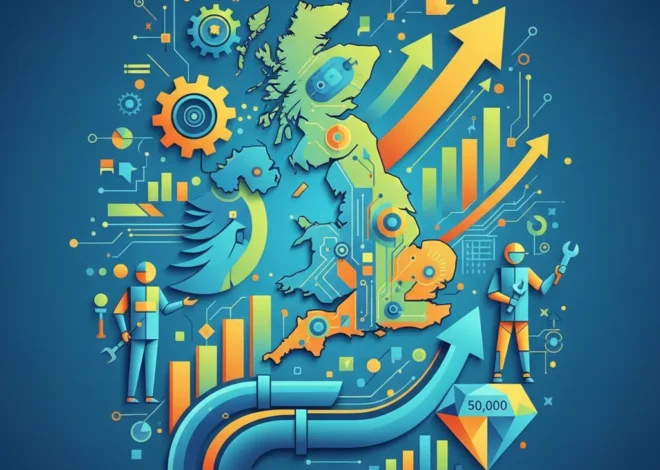
Grounded Ambitions: Reassessing the Financial Viability of Airport Expansion in a Climate-Conscious Economy
For decades, the hum of jet engines has been synonymous with economic progress. Airports were seen as unambiguous engines of growth—gateways to international trade, tourism, and prosperity. The logic was simple: more runways meant more flights, which in turn meant more jobs and a healthier economy. However, a seismic shift is underway, and the foundational assumptions of this growth model are being called into question. A recent report from a UK committee of Members of Parliament has thrown this conflict into sharp relief, stating that the government has failed to demonstrate that the economic benefits of airport expansion outweigh the profound impacts on the climate.
This isn’t just an environmental debate; it’s a critical turning point for finance, investing, and economic policy. The committee’s findings represent a powerful signal that the financial calculus for major infrastructure is being rewritten. For investors, finance professionals, and business leaders, the message is clear: climate risk is no longer a peripheral “green” issue but a core component of financial risk and long-term viability. The once-unquestionable link between aviation growth and economic prosperity is now facing unprecedented turbulence.
The Economic Crosswind: When Growth Models Collide with Climate Reality
The traditional economic case for expanding airports is built on a compelling, tangible foundation. Proponents point to direct benefits like construction jobs, ongoing employment for airline and airport staff, and increased capacity for business travel and cargo. The indirect benefits are even broader, stimulating tourism, facilitating international trade, and boosting the UK’s GDP. This has been the bedrock of aviation policy for generations.
However, the MPs’ report highlights a critical flaw in this old-world economics: the failure to properly price in the negative externalities. In economics, an externality is a cost or benefit caused by a producer that is not financially incurred or received by that producer. In this case, the climate damage from increased carbon emissions is a massive unpriced cost that society, not the airport operator or airline, is forced to bear. The government’s current framework, according to the Transport Committee, does not adequately prove that the projected economic gains are large enough to justify these immense environmental costs, especially in light of the UK’s legally binding net-zero targets.
To understand this conflict, it’s helpful to visualize the balance sheet as seen from these two opposing perspectives.
| Traditional Economic Benefits (The “Pro” Argument) | Modern Climate & Financial Risks (The “Con” Argument) |
|---|---|
| Creation of short-term construction jobs | Increased greenhouse gas emissions, jeopardizing climate targets |
| Long-term employment in aviation and support services | Risk of “stranded assets” if regulations tighten or demand shifts |
| Increased capacity for business and leisure travel | Negative impacts on air quality and public health |
| Enhanced international trade and cargo logistics | Potential for carbon taxes and stricter emissions trading schemes |
| Boost to national and regional GDP | Reputational damage for investors and corporations involved |
What this table illustrates is a fundamental shift from a purely growth-focused economic model to one based on risk-adjusted, sustainable economics. The question is no longer “Will this project generate growth?” but “Will this project generate growth that is resilient, sustainable, and profitable in a carbon-constrained world?”
London's Blueprint for a Building Boom: What Planning Reform Means for the UK Economy and Investors
The Investor’s Dilemma: Pricing Climate Risk and the Specter of Stranded Assets
For the world of finance and investing, this debate is far from academic. Major infrastructure projects like airport expansions require billions in capital, often sourced from pension funds, private equity, and public stock market listings. Investors are now asking tougher questions, driven by the rise of Environmental, Social, and Governance (ESG) principles.
The most significant financial risk is the concept of “stranded assets.” A multi-billion-pound runway built today is an asset with an expected lifespan of 50 years or more. But what if, in 10 or 15 years, stricter climate regulations, prohibitive carbon taxes, or a dramatic shift in consumer behavior (e.g., a move towards high-speed rail) renders that new capacity unprofitable or even obsolete? The asset becomes “stranded”—unable to deliver the financial returns originally projected. This is a terrifying prospect for any long-term investor.
This uncertainty directly impacts the stock market. Companies involved in the aviation ecosystem—airport operators like Heathrow, airlines like IAG (owner of British Airways), and even construction firms—face increased volatility. Their stock prices are becoming increasingly sensitive to regulatory announcements and shifts in climate policy. A negative report from a parliamentary committee can be enough to make investors reconsider the long-term risk profile of these publicly traded companies. The banking sector, which provides the enormous loans for these projects, is also on high alert, with credit risk models now beginning to incorporate sophisticated climate scenarios.
Financial Technology: The Tools for Navigating a Greener Economy
As the financial landscape evolves, so too do the tools used to navigate it. The rise of financial technology (Fintech) is playing a crucial role in helping investors and institutions manage the complexities of the green transition.
ESG data platforms are a prime example. These Fintech companies aggregate and analyze vast amounts of data to score companies on their environmental performance, social impact, and governance quality. An investor considering a bond to fund an airport expansion can now use these platforms to get a detailed, data-driven picture of the project’s carbon footprint and its alignment with global climate goals. This is a world away from the gut-feel decisions of the past.
Furthermore, innovations in blockchain technology offer intriguing possibilities. While often associated with cryptocurrencies, blockchain’s core feature—a secure, transparent, and immutable ledger—has powerful applications in sustainability. For instance, a blockchain-based system could be used for carbon credit trading, ensuring that offsets are real, verifiable, and not double-counted. It could also be used to track the carbon footprint of an entire construction supply chain, providing unprecedented transparency for a project’s true environmental impact. This level of granular, trustworthy data could revolutionize how banks and investors conduct due diligence on large-scale projects.
The Heart's High-Risk Investment: When Emotional Bonds Become Financial Black Holes
Policy Headwinds: Carbon Pricing and the Future of Aviation Economics
Ultimately, the financial viability of airport expansion will be determined by government policy. The UK, like many other nations, has a legally binding target to reach net-zero emissions by 2050. To achieve this, it employs mechanisms like the UK Emissions Trading Scheme (ETS), a form of carbon pricing.
Under an ETS, certain industries must obtain allowances for every tonne of CO2 they emit. The total number of allowances is capped and reduced over time, making them more scarce and expensive. As the MPs’ report implicitly suggests, the current and projected price of carbon may not be high enough in government models to truly reflect the cost of climate damage. If future governments are forced to significantly raise the price of carbon to meet their targets, the operational economics of aviation could change dramatically.
Let’s consider a simplified model of how carbon pricing can affect a project’s profitability.
| Carbon Price Scenario (per tonne CO2) | Annual Cost Impact on Airline Operations | Effect on Airport Expansion Project’s Net Present Value (NPV) |
|---|---|---|
| Low (£50) | Manageable, absorbed through minor ticket price increases | Positive – Project appears financially viable |
| Medium (£150) | Significant, potentially suppressing demand for air travel | Marginal – Project’s profitability is questionable |
| High (£250+) | Severe, making many routes unprofitable and challenging the business model | Negative – Project becomes a likely financial loss |
This illustrates how policy decisions on carbon pricing are no longer just an environmental matter—they are a core variable in the financial modeling of any carbon-intensive industry. Investors and banks must now run scenarios like this to stress-test their investments against future climate policy risk.
The Trillion-Dollar Shift: How a Rare Earth 'Quake' is Redefining Global Finance and Technology
Conclusion: The New Flight Plan for a Sustainable Economy
The debate over UK airport expansion is a microcosm of a much larger global economic shift. The simple, linear equation of “more infrastructure equals more growth” has been replaced by a complex, multi-variable calculus that includes climate risk, carbon pricing, investor sentiment, and technological disruption. The MPs’ report is not an outlier; it is a clear indicator of the new reality.
For business leaders, the takeaway is the urgent need to integrate climate risk into the heart of corporate strategy. For those in finance, banking, and investing, it is a call to refine risk models and channel capital towards the sustainable infrastructure of tomorrow. The challenge is immense, but the opportunity is equally vast. The future of the global economy will be defined by those who can successfully pilot their organizations through this transition, understanding that in the 21st century, sustainable economics is simply good economics.


